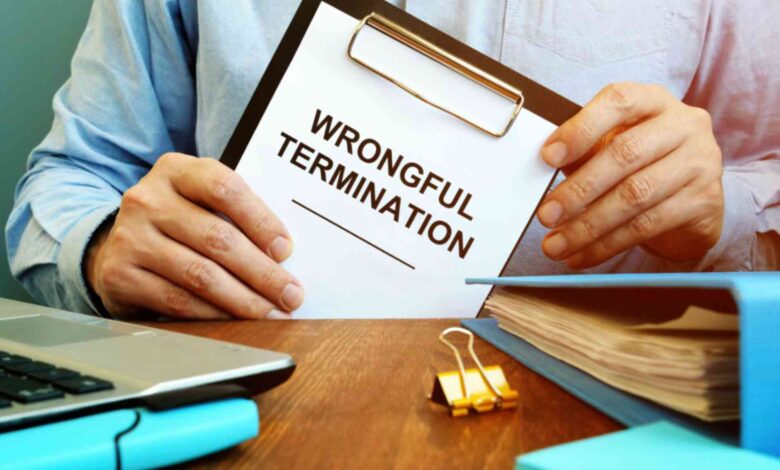How to Prove a Hostile Work Environment Led to Wrongful Termination

A hostile work environment can significantly impact an employee’s performance and mental well-being. In some cases, it may even lead to wrongful termination. Proving that a hostile workplace directly caused wrongful termination can be challenging, but with the right legal guidance and evidence, it is possible to build a strong case. For individuals facing this issue, seeking advice from a Los Angeles wrongful termination lawyer is essential.
What Constitutes a Hostile Work Environment?
Before exploring how a hostile work environment can lead to wrongful termination, it’s important to understand what qualifies as hostile. A work environment is considered hostile when inappropriate or discriminatory behavior is so severe and pervasive that it affects an employee’s ability to perform their job. This can include:
- Harassment: Unwanted behavior based on race, gender, religion, disability, or any other protected category.
- Verbal or Physical Abuse: Insults, threats, or physical intimidation that create fear or discomfort.
- Unreasonable Work Conditions: When management imposes extreme or unfair demands that cannot be reasonably met.
- Retaliation: Punitive actions taken against employees who report misconduct or participate in investigations.
To establish that a workplace was hostile, the behavior in question must be ongoing and not just an isolated incident. The victim must also show that the employer knew about the environment but failed to take adequate steps to resolve it.
How a Hostile Work Environment Leads to Wrongful Termination
In some cases, a hostile work environment can create conditions that force an employee to quit or lead to their termination. This can happen in several ways:
- Retaliation for Reporting Hostility: Employees who report harassment or discriminatory behavior may face retaliation from their employer. This could manifest as demotion, reduction in hours, or being unfairly blamed for workplace issues, culminating in termination. A Los Angeles wrongful termination lawyer can help gather evidence of such retaliation.
- Poor Performance Reviews as a Result of Hostility: A hostile work environment can hinder an employee’s ability to focus and perform effectively. If an employee’s performance suffers due to the harassment or mistreatment, employers may use this as a reason for termination. Proving that the hostile environment directly impacted performance is key to a wrongful termination case.
- Constructive Discharge: In extreme cases, employees may feel they have no choice but to resign due to unbearable working conditions. This is known as constructive discharge, and it can be considered a form of wrongful termination if the employee can show that the work environment was so intolerable that no reasonable person would have stayed.
Key Evidence to Prove a Hostile Work Environment
To successfully prove that a hostile work environment led to wrongful termination, gathering strong evidence is crucial. The following types of evidence can support a case:
- Documented Complaints: Keeping a record of complaints made to HR or supervisors about hostile behavior is critical. This can show that the employer was made aware of the situation but failed to take appropriate action.
- Witness Testimonies: Colleagues who witnessed the hostile behavior or its effects on the employee can provide valuable testimonies. These can corroborate the claim that the work environment was detrimental and led to wrongful termination.
- Emails, Texts, and Written Communication: Written proof of inappropriate comments, unfair treatment, or retaliation can serve as solid evidence in court. Ensure that any relevant emails, text messages, or notes are saved and organized.
- Performance Reviews: If poor performance reviews were a result of the hostile environment, it is important to compare these with previous reviews before the hostility began. Any drastic change in evaluations could suggest that the environment directly influenced performance.
- Medical Records: In cases where the hostile work environment caused emotional distress, anxiety, or physical health issues, medical records can serve as evidence that the work environment impacted the employee’s well-being.
Steps to Take if Wrongfully Terminated Due to a Hostile Work Environment
- Consult a Lawyer: The first step is to contact an experienced Los Angeles wrongful termination lawyer, such as those at JML Law, APLC, who specialize in handling wrongful termination cases involving hostile work environments. They can provide guidance on how to proceed and gather the necessary evidence.
- File a Complaint: Before taking legal action, it may be necessary to file a formal complaint with the Equal Employment Opportunity Commission (EEOC) or the California Department of Fair Employment and Housing (DFEH). These agencies investigate claims of discrimination and harassment.
- Gather Documentation: Collect all evidence, including emails, performance reviews, and witness testimonies, that demonstrate the hostile nature of the work environment and how it led to termination.
- Build a Case: Work with a wrongful termination lawyer to build a strong case. The team at JML Law, APLC, can help clients navigate the legal process and advocate on their behalf to seek compensation for lost wages, emotional distress, and potential reinstatement.
Conclusion
Proving that a hostile work environment led to wrongful termination requires thorough documentation and a clear connection between the hostile conditions and the termination itself. Employees facing such a situation should take immediate steps to gather evidence and seek legal advice. An experienced Los Angeles wrongful termination lawyer can help ensure that the employee’s rights are protected, and justice is served.
If you or someone you know has been wrongfully terminated due to a hostile work environment, consulting with a lawyer from JML Law, APLC, could be a crucial step in resolving the case and holding the responsible parties accountable.




